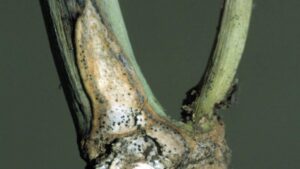When one thinks of the major crops grown in Saskatchewan, spring wheat, canola, and pulses like peas and lentils are typically what come to mind._x000D_
_x000D_
While not rivaling spring wheat and canola, durum continues to hold its own as a major crop in the province, with growers striving to meet the rising demand for pasta products throughout the world._x000D_
_x000D_
To assist growers in meeting export demand and maintaining a healthy profit from their durum crop, Sask Wheat along with SeCan have entered into a partnership that will see the two organizations invest up to $3.5 million over ten years in the University of Saskatchewan’s Crop Development Centre (CDC) Durum Breeding Program._x000D_
_x000D_
This funding will give the CDC a boost in their development of new durum varieties. Durum is a unique from spring wheat and poses production and end-use quality challenges. The breeding of durum varieties with resistance to common pests and diseases, notably fusarium head blight (FHB), has been slow because of the genetic complexity of the trait._x000D_
_x000D_
Through its world-leading program for Canada Western Amber Durum (CWAD), the CDC will use the investment from Sask Wheat and SeCan to further and enhance previous research and development activities. According to CDC Managing Director Kofi Agblor, this new funding in durum breeding is one that will soon pay dividends to producers and benefit end users._x000D_
_x000D_
“Developing new varieties is a long-term expensive endeavour that requires investment from several sources,” he says. “We are now on the cusp of developing new varieties of durum that will provide value to both our growers and their customers. This investment by producers will build on the tremendous work already done and should expedite the release of new cultivars.”_x000D_
_x000D_
Saskatchewan is a world leader in the production of durum. Of the 5.75 million acres grown in Canada in 2015, it is estimated that more than 85 per cent of the durum crop came from Saskatchewan._x000D_
_x000D_
To keep durum competitive with other crops, it is critical to address not only the quality issues presented by FHB, wheat midge and sawfly, but also to improve yields. While much of the focus of the CDC’s durum program is devoted to finding resistance to FHB and pests, a key component of it will be devoted to improving yields._x000D_
_x000D_
“Obviously, we want to use these incremental funds to develop our yield-testing capacity, particularly in the durum growing region and Regina Plains,” says Curtis Pozniak, a professor with the University of Saskatchewan’s College of Agriculture and Bioresources, and wheat breeder and geneticist with the CDC._x000D_
_x000D_
“This will support early evaluation and selection of materials for yield potential, standability and time to maturity. These are all important factors that are already a priority in our breeding program, but with these incremental funds, we will do a better job of selecting for these earlier in the program.”_x000D_
_x000D_
The Sask Wheat and SeCan investment will also be used to improve the use of genomic-assisted breeding in the durum program. As Pozniak explains, the CDC is a leader in the application of genomic technologies to wheat breeding, which will benefit the efforts to develop new durum varieties._x000D_
_x000D_
“We plan to use some of these funds to increase our capacity for molecular marker analysis, in particular for disease resistance as well as genes for the control of sawfly and wheat midge._x000D_
_x000D_
“We’re confident that this investment will lead to higher-yielding cultivars and end-use quality factors that are important to our export markets.”_x000D_
_x000D_
The first of the new durum varieties, which will likely have improved pest tolerance, are expected to be released by the CDC in 2017.













